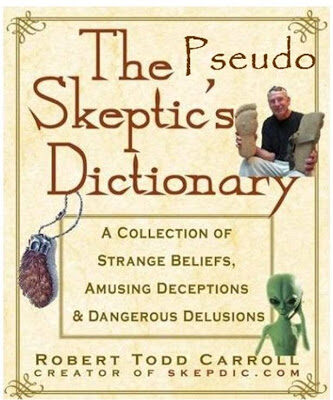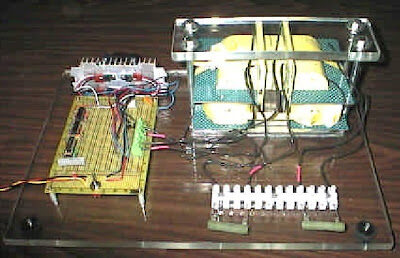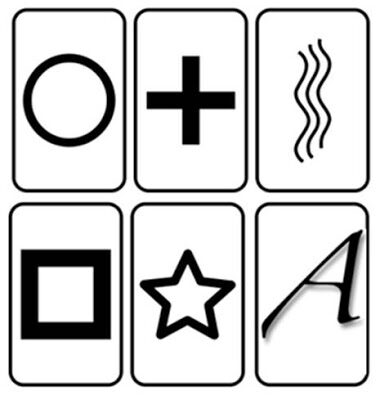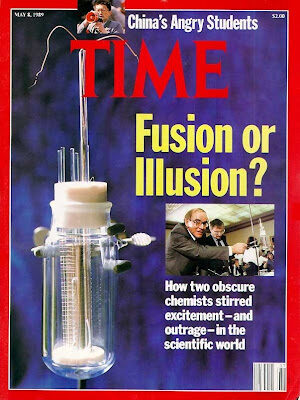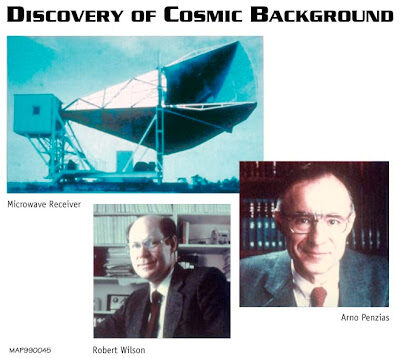This segment will consider:
Responding to Claims that were not made aka Demolishing Straw Men Technically Correct Pseudo-Refutation Making criticisms that apply equally to conventional and unconventional research Demanding an Unreasonable Degree of Reproducibility Profit Motive Statistics can prove Anything! Fraud cannot be ruled out!
In Medicine: It’s Unsafe!
Responding to Claims that were not made aka Demolishing Straw Men
Benveniste (who showed that ultradilutions, i.e. homeopathic preparations not containing a single molecule of the original substance can still have a biological effect) was attacked by Nature editor John Maddox with the argument that dilutions of the kind used by Benveniste can simply not exist because they would require “1074 world oceans” (that is more water than contained in the entire universe) to manufacture. That is correct, if the definition of “dilution” requires that at least one molecule remain, but Benveniste (and generations of homeopaths) have readily conceded that very point! Everyone agrees that high homeopathic dilutions do not contain a single active molecule, so Maddox’s argument is nothing but the ritual dissection of a straw man. He is not alone – “skeptical” discussions of homeopathy invariably spend a lot of time making this completely uncontested point.Our favourite resource for invalid criticisms, the Skeptic’s Dictionary, tries to downplay the important of the Gauquelin data by stressing that correlation does not imply causation. But astrologers do not claim causation! Both adherents and skeptics agree that astrology is a branch of magic, and as such is based on the principle of correspondences. This principles claims that nature exhibits meaningful, not necessarily causally mediated analogous behavior on all levels. The Gauquelin data shows correlation between the movements of the planets and certain aspects of human behavior; nothing more is claimed by astrology.
In a personal note published on James Randi’s Website, Robert Park makes the following statement about the “Motionless Electromagnetic Generator”, a claimed free energy device:
I’ve been following the MEG claim since Patent 6,362,718 was issued in the spring (What’s New 4 Apr 02). The claim, of course, is preposterous. It is a clear violation of the conservation of energy.
But Park is only demolishing a straw man. The first law of thermodynamics states that the energy of a closed system is conserved. But the inventors of the MEG claim that their device takes energy from the zero-point field of the vacuum, thereby conserving the energy of the total system (which in this case would be the MEG and the surrounding vacuum). Whether it can actually do that is an open question. But the existence of the Casimir force proves that in principle such extraction of energy from the vacuum is possible (even though the potential energy gained from the Casimir force between two plates is negligible). Therefore, one cannot dismiss claims for free energy devices such as the MEG on a priori grounds of energy conservation. Since Park is a physicists, he could not possibly be unaware of this. By making this argument, he is therefore intentionally misrepresenting the claims of the MEG inventors. They do not claim to have found a way around the first law; they merely claim to have accessed a source of energy not previously accessible to human technology.[Note: The author is aware of no legitimate scientific evidence that the MEG works as claimed. The purpose of this example is not to suggest that it is a legitimate “free energy” device, but simply to point out the invalid nature of some of the arguments against it.]
Technically Correct Pseudo-Refutation (credit for the term goes to Daniel Drasin):
Pseudoskeptics are fond of arguing that hundreds of respectable scientists believe that a certain idea is bunk, and therefore, it must be. When one points out to them that many scientific breakthroughs were ridiculed and dismissed by the scientific establishment of the time, they retort that not every idea that has been ridiculed or dismissed turned out to be correct. Correct, but completely irrelevant, because it responds to an argument that was not made. The argument was not that ridicule or dismissal by scientific experts is sufficient grounds for accepting an unorthodox claim, simply that it is insufficient grounds for rejecting it.Robert T. Carroll, a Professor of Philosophy at the Sacramento City College no less, falls into this logical trap when he writes in his Skeptic’s Dictionary about what he calls “selective thinking”:
Let’s begin with his version of the “they laughed at Galileo, so I must be right” fallacy, a non sequitur variation of selective thinking.
In his book Alternative Science, and on his web site under what he calls Skeptics who declared discoveries and inventions impossible, Milton lists a number of inventors and scientists who struggled to get their ideas accepted. Many were ridiculed along the way. But, like many others who commit this fallacy, Milton omits some important, relevant data. He does not mention that there are also a great number of inventors, scientists and thinkers who were laughed at and whose ideas have never been accepted. Many people accused of being crackpots turned out to be crackpots. Some did not. Thus, being ridiculed and rejected for one’s ideas is not a sign that one is correct. It is not a sign of anything important about the idea which is being rejected. Thus, finding large numbers of skeptics who reject ideas as being “crackpot ideas” does not strengthen the likelihood of those ideas being correct. The number of skeptics who reject an idea is completely irrelevant to the truth of the idea. Ideas such as alien abduction, homeopathy, psychokinesis, orgone energy, ESP, free energy, spontaneous human combustion, and the rejection of evolution–all favored by Milton–are not supported in the least by the fact that these ideas are trashed by thousands of skeptics.
True, but irrelevant! Milton’s argument shows precisely what it is supposed to show: that the skeptic’s knee-jerk dismissal of unorthodox claimants as “pseudo-scientists”, “fringe-scientists” and “crackpots” simply carries no evidentiary weight one way or another. In his skeptical zeal to convict Milton of blundering in the realm of logic, Carroll commits a much more elementary error than selective reasoning: he responds to an argument that is not being made. Milton’s argument is not “they laughed at Galileo, therefore every unconventional claimant is right”, it is merely “they laughed at Galileo, therefore unconventional claimants cannot be presumed wrong.”
Carroll’s attempt to hold Milton responsible for an argument not made is a variation of the popular pseudoskeptical technique of Demolishing a Straw Man.
Making criticisms that apply equally to conventional and unconventional research:
It should be obvious that a criticism is invalid if it applies just as well to established science as it applies to an unconventional claim (such a criticism is called uncontrolled). But pseudoskeptics get away with using this technique anyway. What follows are some common examples of uncontrolled and therefore invalid criticisms.
Demanding an Unreasonable Degree of Reproducibility:
Reproducibility means that a phenomenon can be demonstrated on demand, anywhere, at any time. Pseudoskeptics believe that an unconventional phenomenon can safely be considered nonexistent unless it is reproducible in this sense. But the same standard of evidence would invalidate much of accepted science. Discoveries in archeology are by their nature unique, non reproducible. Astronomy and geology are not reproducible in the strictest sense – astronomers cannot produce a supernova on demand, nor can geologists an earthquake. Even physics, the “hardest” of all sciences, is less and less reproducible in practice. Cutting-edge discoveries of high-energy physics, such as the discovery of the top quark are accepted by the physical community and then the public largely on faith, because no one else has the facilities to replicate them. The top quark is simply one of those discoveries whose experimental verification is beyond amateur science.
Similarly, the complete inability of ordinary humans to influence macroscopic systems with their minds alone, even in the slightest, strongly suggests that mind-matter interaction, if it exists, will be hard to demonstrate experimentally. A skeptic who rejects the conclusion of statistically sound meta-analysis of decades of mind-matter experiments because she feels that the phenomenon should be proven directly, by producing a person who can consistently, say, levitate objects, should similarly reject the discovery of the top quark until such time as a demonstration kit be made available that allows any physics high school teacher to produce said particle on the kitchen top. Either demand is unreasonable and denies the difficult nature of the subject matter.
Profit Motive:
Pseudoskeptics try to invalidate unconventional claims by pointing out that the claimants derive financial support from their research (through books, newsletters or speaking engagements), blithely ignoring that conventional scientists derive their livelihood from their work as well. If a cold fusion researcher who is trying to commercialize his discoveries is a priori suspect, should not by the same token the hot fusion physicist’s 1989 dismissal of the cold fusion discovery be viewed with extreme suspicion, since their very livelihood depends on the continued flow of billions of federal research dollars into their field, a field that has produced no tangible results, despite 50 years of research?
To mention an anecdotal example, I have personally observed skeptics of the claim of adverse biological effects from microwave radiation produced by cellular devices having the gall to argue that critics of cellular technology cannot possibly be taken seriously because they make money from publishing their criticisms, while the same skeptics do not find fault with studies funded and written by the multi-billion-dollar cellular industry!
[Richard Dawkins questioned the funding for The Atlas of Creation, a book which he did an utterly pathetic job of pseudo-critiquing]
Statistics can prove Anything!
Such is essentially the argument that the spokesman of the American Physical Society, Robert L. Park, makes against psychokinetic research in his book Voodoo Science (p. 199). In the context of a discussion of an obviously pseudoscientific Good Morning America report on anomalous phenomena (debunkery by association: as if TV shows were the principal outlet for reporting the results of psi research!), Park writes
Why, you may wonder, all this business of random machines? Jahn has studied random number generators, water fountains in which the subject tries to urge drops to greater heights, all sorts of machines. But it is not clear that any of these machines are truly random. Indeed, it is generally believed that there are no truly random machines. It may be, therefore, that the lack of randomness only begins to show up after many trials.
Besides, if the mind can influence inanimate objects, why not simply measure the static force the mind can exert? Modern ultramicrobalances can routinely measure a force of much less than a billionth of an ounce. Why not just use your psychokinetic powers to deflect a microbalance? It’s sensitive, simple, even quantitative, with no need for any dubious statistical analysis.
There are many things wrong with this statement, and I refer the reader to my review of Park’s book for details. For the purpose of this argument, I am interested in Park’s assessment that effects that are only indirectly detected, by statistical analysis, are suspect. Where does that leave conventional science? Deprived of one of its most powerful tools of analysis. The cherished 1992 COBE discovery of minute fluctuations in the cosmic microwave background radiation would have to be thrown out, since it was entirely statistical in nature, and therefore by Park’s argument, ‘dubious’. The most celebrated discoveries of particle physics, such as the 1995 discovery of the top quark, or the results of neutrino detection experiments, or the synthesis of superheavy, extremely short-lived elements, would have to be thrown out, since they, too, are indirect and statistical in nature. Modern medicine would have to be invalidated as well because it relies on statistical analysis (of double-blind trials) to prove the efficacy of drugs.
For comparison: the American Institute of Physics’s Bulletin of Physics News, #216, March 3, 1995 gives the odds against chance for the top quark discovery as a million to one. A 1987 meta-analysis performed by Dean Radin and Roger Nelson of RNG (random number generator) experiments between 1959 and 1987, on the other hand, shows the existence of an anomalous deviation from chance with odds against chance exceeding one trillion to one (see Radin, The Conscious Universe, p. 140).
Park’s argument is the quintessential uncontrolled criticism: accepted scientific methods that constitute the backbone of modern science suddenly become questionable when they are used on phenomena that don’t fit his ideological predilections.
Fraud cannot be ruled out!
The pseudoskeptical argument of last resort. If a body of research supporting an unconventional claim is airtight, the pseudoskeptic will argue that since the conclusion contradicts established theories of nature (she will call them “facts”), and all other alternative explanations have been exhausted, the results must therefore be due to fraud. Of course, such an argument from theory turns the scientific method on its head (unless the skeptic can prove that fraud has actually been committed), but what is more important, the same argument can be made for any research. Indeed, when funding or scientific prestige are at stake, results are frequently faked in the conventional sciences, probably much more frequently than in, say, parapsychology where skeptical scrutiny is intense.
In Medicine: It’s Unsafe!
A favorite argument of the professional “quackbusters” like Stephen Barret is that an alternative procedure is unsafe. On the Acupuncture page of his site, Barret states that
Improperly performed acupuncture can cause fainting, local hematoma (due to bleeding from a punctured blood vessel), pneumothorax (punctured lung), convulsions, local infections, hepatitis B (from unsterile needles), bacterial endocarditis, contact dermatitis, and nerve damage,
missing the mark of controlled criticism by a wide margin. Why not similarly list the dangers of improperly performed surgery and then denounce the whole field as quackery?
~~~~~~~~~~~~~~~~~~~~~~~~
A plea: I have to pay for server usage and have made all content on this website free and always will. I support my family on one income and do research, writing, videos, etc. as a hobby. If you can even spare $1.00 as a donation, please do so: it may not seem like much but if each person reading this would do so, even every now and then, it would add up and really, really help. Here is my donate/paypal page.
Due to robo-spaming, I had to close the comment sections. However, you can comment on my Facebook page and/or on my Google+ page.

